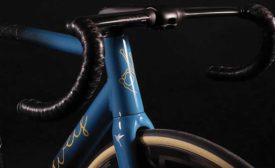Home » lightweight materials
Articles Tagged with ''lightweight materials''
Lightweighting Is Top Priority for Automotive Industry
Lightweighting is the No. 1 challenge facing automotive engineers today
June 7, 2018
The Growing Role of Plastics in Aerospace Assembly
Demand for lightweight applications is creating a new role for thermoplastics.
February 1, 2018
Assembling Magnesium Parts
Magnesium is strong and lightweight, but it poses problems for fastening and joining.
June 3, 2016
New Materials Spur Innovation in Sporting Goods Manufacturing
Engineers are scrambling to make products stronger, lighter and smarter.
November 3, 2014
Never miss the latest news and trends driving the manufacturing industry
Stay in the know on the latest assembly trends.
JOIN TODAY!Copyright ©2024. All Rights Reserved BNP Media.
Design, CMS, Hosting & Web Development :: ePublishing











